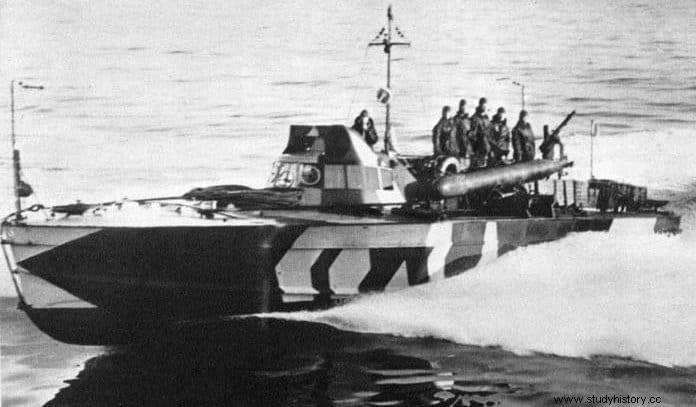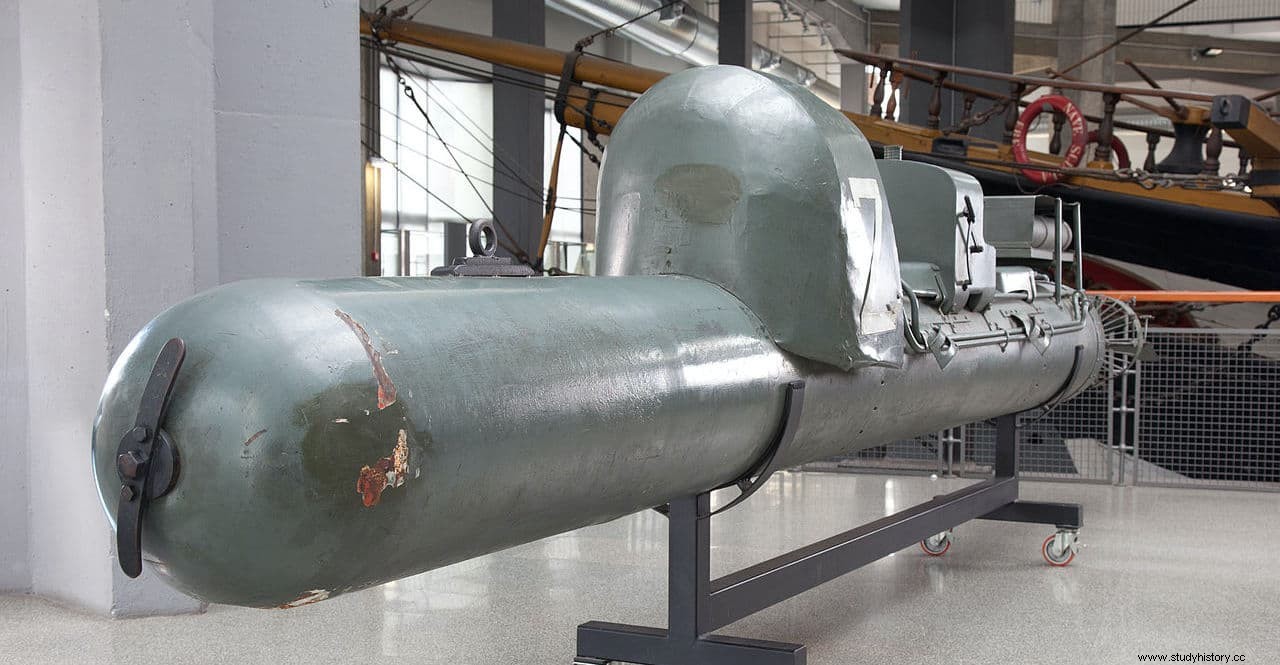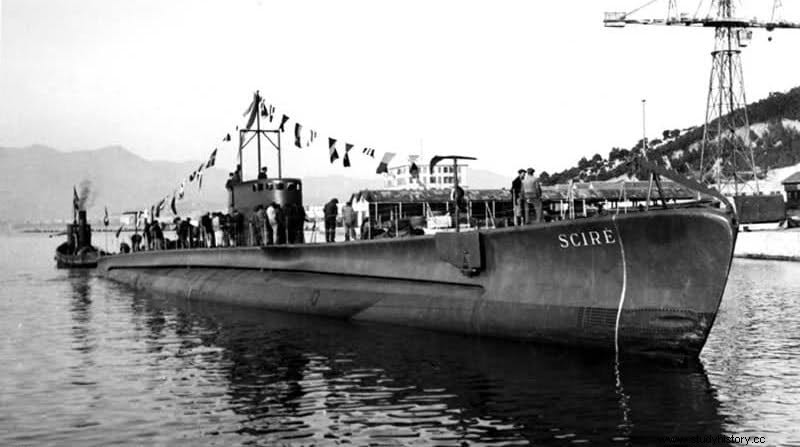Some time ago we dedicated an article to the pigs that in ancient times were used to scare war elephants, according to references by Pliny the Elder, Procopius of Caesarea and Claudius Eliano (even engulfed in flames, according to Polyenus). So if we talk about the use of pigs against ships in World War II surely more than one will be amazed. But in this case it is not the porcine species but the nickname that the members of the Italian Xª Flottiglia MAS gave to their manned torpedoes, with which they carried out a daring raid in Alexandria against the Royal Navy.
This unit, also known as the TIMA, was part of a group of them of the Regia Marina created in the interwar period from the experience of the First World War with the motorboats, small tourist boats that were equipped with a torpedo and technically renamed MAS (Motorbarca Armata Silurante ). The objective of these was to compensate for the limitations of the navy, replacing the firepower of large ships with speed and surprise. The initiative turned out to be positive, so during the Ethiopian campaign Flottiglia MAS was created and given other weapons. The one we are interested in here is the Rosetti self-propelled torpedo, named after its designer, Raffaele Rosetti, but popularly nicknamed Mignatta.
It was a torpedo, developed between 1915 and 1917, whose main characteristic was to be manned by two divers who sat on horseback or clung to its sides, pushing it to direct it as it lacked a rudder. It reached a speed of two knots and had a radius of action of 10 nautical miles, carrying 175 kilos of explosives that could be programmed as time bombs, adhering them to the hull of the enemy ship by means of an electromagnet (hence the Mignatta ). His first prey was the Hungarian steamer Viribus Unitis , in 1918. The success led to a larger-scale production and the introduction of variants after the war.

One was the slow torpedo or SLC (Siluro a Lenta Corsa ), introduced in 1935 by Genie Diver captains Teseo Tesei and Elios Toschi. It was an authentic electric mini-submarine 7.30 meters long, with a speed of 2.5 knots and a range of 15 miles, which this time did have a rudder and carried an explosive charge of 230 kilos in the bow, which could be separated from the rest. . In the central part, a compartment for divers similar to that of airplanes was installed, although it was later replaced by two simple seats to ride astride. As we said, the SLC had the mission of compensating for the weakness of the Regia Marina against the Royal Navy at a time when the expansionism of the fascist regime of Mussolini and Nazi Germany had altered the stability of Europe.
This prompted the creation in 1939 of the 1st Flottiglia MAS, with five squadrons and a total of 20 men under the command of Captain Paolo Aloisi, established in a base in La Spezia. At the outbreak of World War II, three other flotillas and several autonomous squadrons were added, leaving the 1st for assault actions. Altogether, the balance of ships sunk to the enemy added 16 up to 1943, despite the fact that the beginnings were not very lucky and the first attempts made against British ships in Alexandria and Gibraltar failed when they were discovered, claiming the first mortal casualties.

The unit was then reorganized, renamed Xª Flottiglia MAS (in homage to Julius Caesar's favorite legion, the X Gemina) and placed under the command of Captain Vittorio Moccagatta. From there came the first successes in Crete and Malta, although the risky way of operating used to force missions to be aborted or to lose men; one of the fallen was precisely the inventor of the SLC, Captain Teseo Tesei. And it is that the divers were very exposed, since they had to be transferred as close as possible to their objective in a submarine, leave it with the torpedo, enter the enemy port avoiding the safety net and using a compass, take out the head from the water to locate the chosen ship, get under its hull and anchor the warhead of the torpedo to it, before programming the explosion and escaping.
The most successful mission was that of December 19, 1941 in Alexandria (Egypt), where the British Navy was anchored. It all started on the night of the 3rd of that month, when the submarine Sciré , commanded by Captain Julio Valerio Borghese, sailed from La Spezia to Leros (an Italian island in the Aegean Sea), where he picked up six men with their respective three maiali (pigs). The Italians called the SLC torpedoes that way without knowing exactly why, perhaps because of their slowness, their poor agility or their rounded shapes. The fact is that 14 days later they arrived 1.3 miles from the aforementioned Egyptian port but had to wait two days for a storm to subside so that the MAS left the submersible with its peculiar artifacts waiting to be able to pass through the mouth, taking advantage of the entrance of a ship.

They did it under the wake of three destroyers and then the typical unexpected problems that can spoil a good plan began. To the torpedo carried by Luigi Durand de la Penne and Emilio Bianchi towards the battleship HMS Valiant His engine broke down and they had to push him until Bianchi couldn't continue as his respirator also failed. De la Penne managed to drop the SLC to the bottom, detach the explosive charge from it, and attach it to the Valiant's hull. , all alone, before coming to the surface and being discovered with his partner, leaving both prisoners... aboard the ship they were going to sabotage. In the interrogation they only admitted that they had planted a mine but did not say where or talk about the rest of the team.
Because they weren't the only ones in action. Meanwhile, his comrades Antonio Marceglia and Spartaco Schergat had also planted explosives on the battleship HMS Queen Elizabeth , then managing to escape from the port to the city to mingle with the crowd and pose as French sailors, hoping to find a way to contact the Sciré to pick them up. Also, Vincenzo Martellotta and Mario Marino did not locate the ship they were looking for so they decided to sabotage the Sagona , a huge oil tanker that was also anchored there; after programming their bomb, they were able to leave the port and reach land.
And so, when the dawn was beginning to lighten, the HMS Valiant burst Miraculously, neither de la Penne nor Bianchi were injured, despite the fact that they had been locked in a cellar just above the site of the detonation and only the former was hit by a chain. Both managed to get out on deck, from where they were evacuated along with the rest of the crew. Shortly after, the Egyptian police discovered and arrested Martellotta and Mario Marino at a checkpoint but they had done a good job and the Sagona, as planned, exploded at 6:00 the next morning, losing the entire stern; the destroyer HMS Jervis , which was refueling, suffered collateral damage.
A day later it was the HMS Queen Elizabeth the one that jumped into the air, all of which put the military authorities in Alexandria on high alert. With police and soldiers on the lookout for any suspects, Marceglia and Schergat were soon spotted and arrested in the town of Rosetta. They were unlucky because the SIM (Servizio de Informazione Militari) made a serious mistake:it had given them money that was no longer legal tender, so when they proceeded to change the bills in a bank office they aroused the suspicion of the manager, who notify the authorities.

The HMS Valiant she had to be towed into a dry dock and was out of service for six months while the HMS Queen Elizabeth she needed 17 to sail again. The HMS Jervis she came out better off and in January she was back in operation. The fact of being in shallow waters allowed the ships to be recovered. But to all this we had to add the sinking of the battleship HMS Barham by a German submarine near Crete, so the blow received by the Royal Navy was considerable and it was temporarily inferior to the Regia Marina in the Mediterranean.
It should be added that the British took it with a certain sportsmanship:after the armistice of Cassibile, by which the Kingdom of Italy surrendered to the Allies on September 8, 1943, the six imprisoned divers were not only released and repatriated but also decorated personally by Commodore Sir Charles Morgan, former commander of HMS Valiant , which the MOVM (Medaglia d'Oro al Valore Militare) imposed on them.
